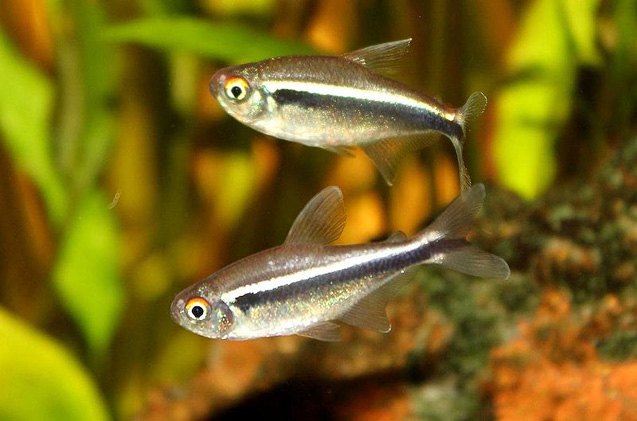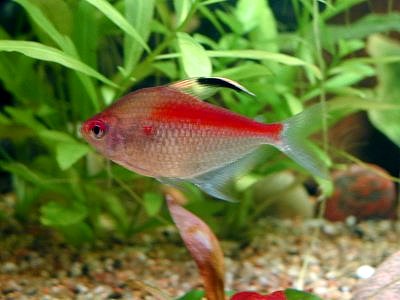
Tetra General description
Tetras are a species of tropical fish extremely popular in the aquarium trade. There are over 150 different species of tetras, most of which have small, compressed body shapes. Tetras are also characterized by their tiny adipose fin which is located between their dorsal and tail fins. Most aquarium varieties of tetra are extremely colorful and relatively hardy, making them a popular choice amongst beginner and experienced aquarists alike.
Tetras are a species of tropical fish extremely popular in the aquarium trade.
Origins
Tetras originate from Africa, Central America, and South America.
Color
Tetras come in a wide array of shades and color combinations, including red, blue, silver, grey, yellow and white.
Maintenance and care

Tetras are an extremely timid, schooling species of fish and do best when kept in large groups of 10 or more. When kept in smaller groups or in pairs, tetras can often turn jumpy and suffer from stress. They are active swimmers and thrive when provided with large open swimming spaces. They also appreciate heavily planted aquariums with plenty of hiding places where they can retreat to when feeling threatened. While the water requirements of each species of tetra differ slightly based on their natural habitats, most tetras can adapt to a variety of water conditions.
Tetras are extremely peaceful and make excellent additions to most community tanks. However they should not be kept with aggressive species that might harass them, or larger, predatory species that might prey on them.
Feeding
Tetras are omnivores and will readily accept most flake based aquarium foods.
There are over 150 different species of tetras, most of which have small, compressed body shapes.
Breeding
While breeding tetras isn’t as easy as breeding livebearers like swordtails or mollies, it is not altogether impossible. However, it is a task that takes a great deal of effort and careful attention. The first step in attempting to breed tetras is learning to sex them. Mature female tetras will be larger in size and will be plumper around the belly region. Males, on the other hand, are usually more vibrant in color and have longer fins. Another important aspect that needs to be paid attention to when breeding tetras is their diet. It is crucial to provide tetras with a varied diet that includes different types of live foods which provide essential vitamins and minerals that are required to get the fish into breeding condition. The water parameters of the breeding aquarium too are of utmost importance. It is sometimes necessary to carry out sporadic water changes and temperature changes to mimic naturally occurring weather patterns to entice tetras to spawn. Once spawning occurs, it is important to promptly separate the parents from the breeding tank because they will readily devour any eggs that they come across.
Aquarium varieties
Neon Tetra, Black Neon Tetra, Cardinal Tetra, Glowlight Tetra, Bleeding Heart Tetra, Black Phantom Tetra, Emperor Tetras, etc.
Photo credit: Juan R. Lascorz/Wikimedia; WIKIFAN-UL/Wikimedia















